Bringing walls to life, one character at a time.
Table of Contents
Introduction
Have you ever strolled through a city and been captivated by a colorful character spray-painted on a wall? Graffiti characters are a dynamic part of street art culture, adding personality and stories to urban landscapes. In this guide, you’ll discover how to create your own graffiti characters and contribute to this vibrant art form.
Explore more about graffiti culture on our blog here.
What Are Graffiti Characters?
Graffiti characters are decorative illustrations, typically designed alongside or over graffiti lettering, to enhance the overall message or to add a personal touch. These characters range from animated figures to animals, and sometimes even abstract forms or well-known pop culture icons.
These vibrant and stylized characters often become a signature element of the graffiti artist’s style. Whether they’re intricate monsters, simple B-boy figures, or cartoonish animals, graffiti characters help convey emotions, social messages, or simply showcase the artist’s flair.
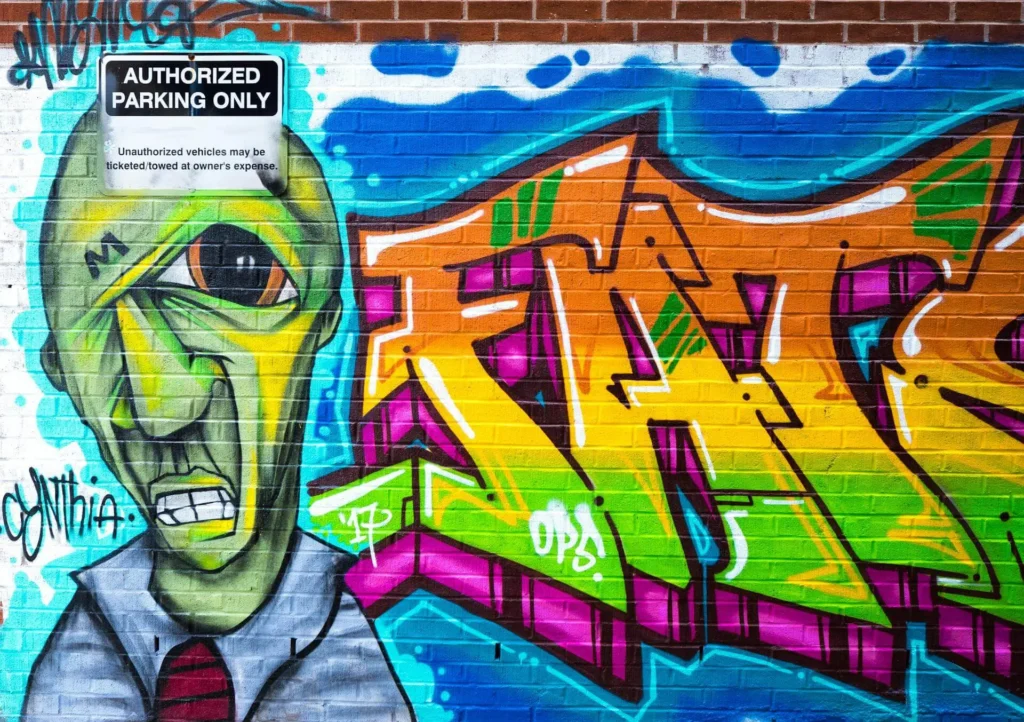
Why Are Graffiti Characters Popular?
Graffiti characters are often easier for audiences to relate to than abstract or complex letter-based graffiti styles. Characters create a narrative or emotional connection, allowing for a story to be told through visuals. Some popular graffiti artists use well-known figures from cartoons or pop culture, while others develop unique characters that become synonymous with their work.
Types of Graffiti Characters
1. B-boy Characters
B-boy characters are one of the most common figures in graffiti. These characters are typically minimalistic, with exaggerated features like oversized hats, chains, sunglasses, or grillz. Often drawn in simple poses, B-boy characters are used to add a street-style, urban vibe to the piece.
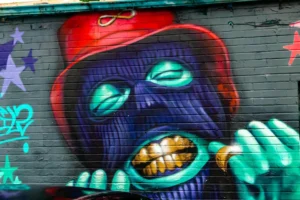
« When coloring characters, shading can be done either with hard lines for a stylized look or smooth fades for a realistic effect. »
2. Cheech Wizard

A graffiti icon, Cheech Wizard, was originally created in the 1970s by Vaughn Bodé. It became a popular figure among graffiti artists, especially during the rise of graffiti culture in the late 20th century. This character is often depicted in chains, adding a raw and edgy feel to graffiti designs. Disney and Marvel characters are also frequently used as inspiration for street artists.
Tip: If you’re new to graffiti, start by using well-known cartoon figures to practice, as their simple shapes and recognizable features make it easier to learn.
3. Monsters and Abstract Figures
Some artists create completely original monsters or abstract figures. These characters often have exaggerated proportions and dramatic facial expressions, making them stand out on large walls. Such characters allow for more creative freedom, as there are no pre-set expectations for how they should look.
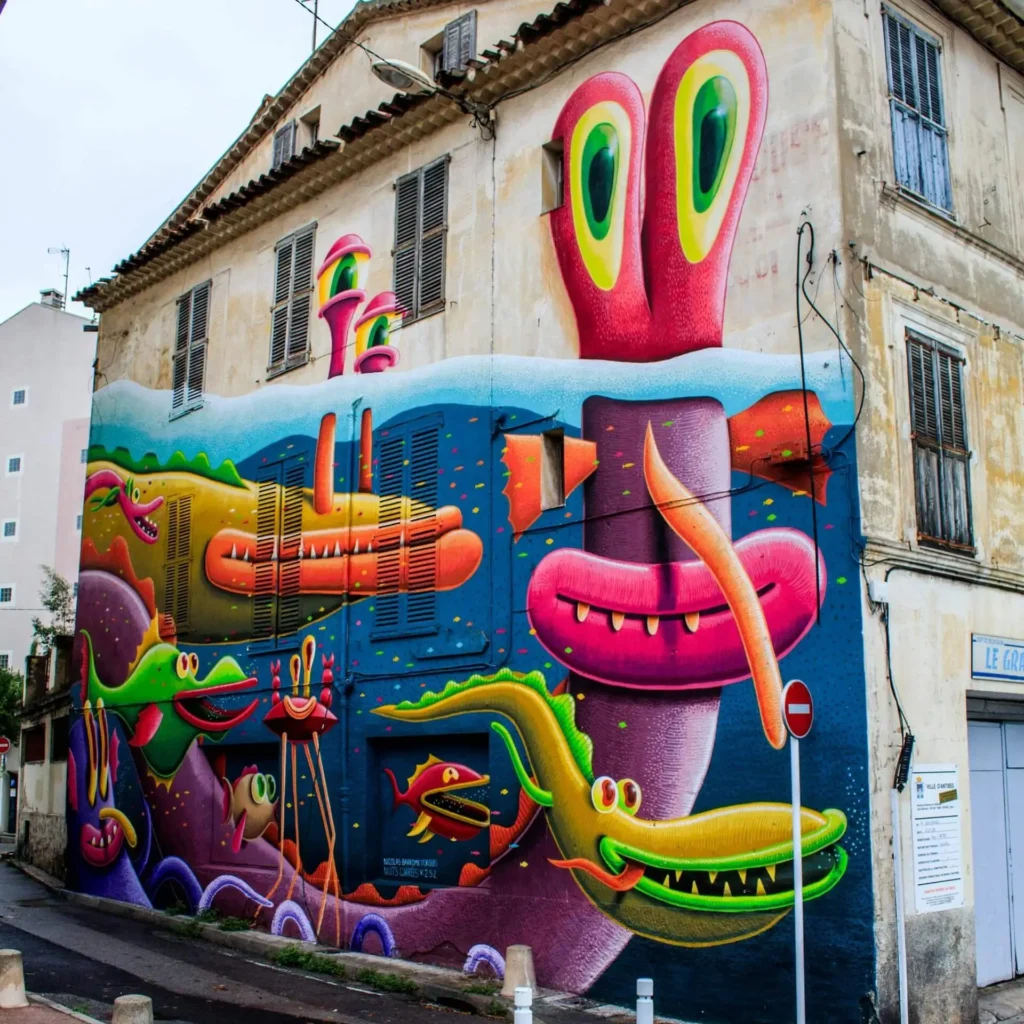
4. Lady Characters
Elegant or powerful female characters are often seen in graffiti art, particularly as a way to soften or balance out the masculine energy of urban street art. These figures can range from delicate and peaceful to bold and assertive, depending on the message the artist wants to convey.
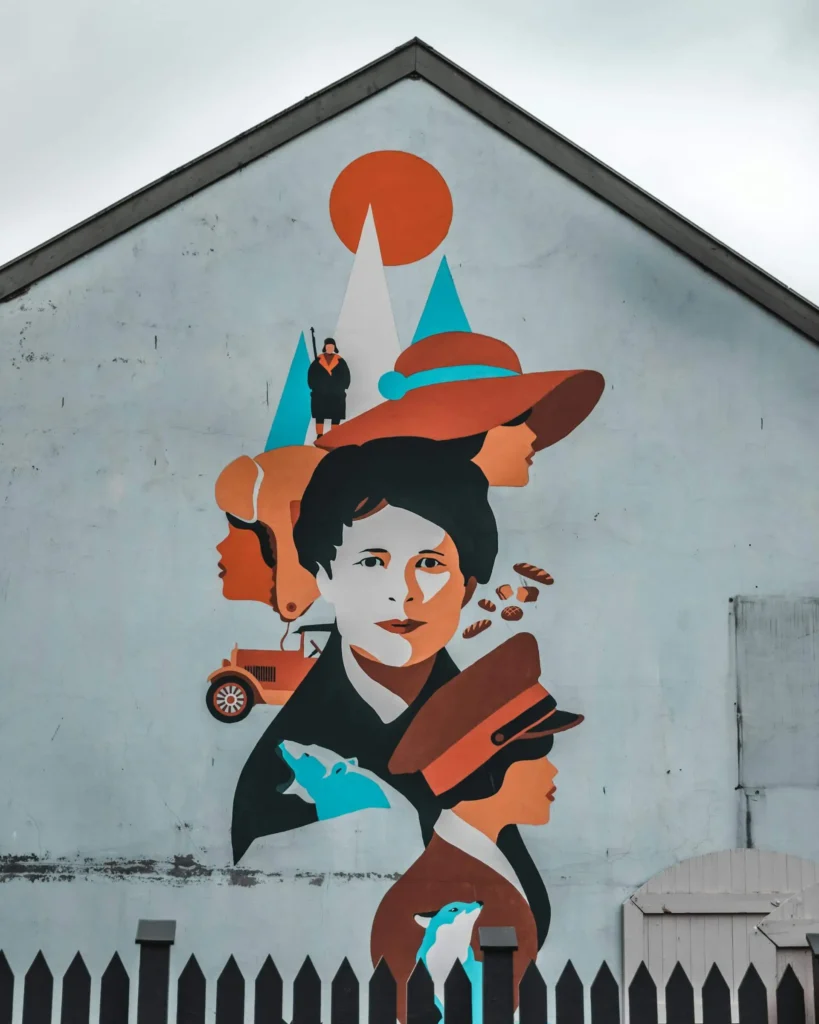
5. Animal Characters
Animals, often in a cartoon-like style, are also common in graffiti. They may represent strength, cunning, or playfulness, depending on the animal chosen. These characters can be used to connect with viewers emotionally or to symbolize something specific to the artist’s intent.
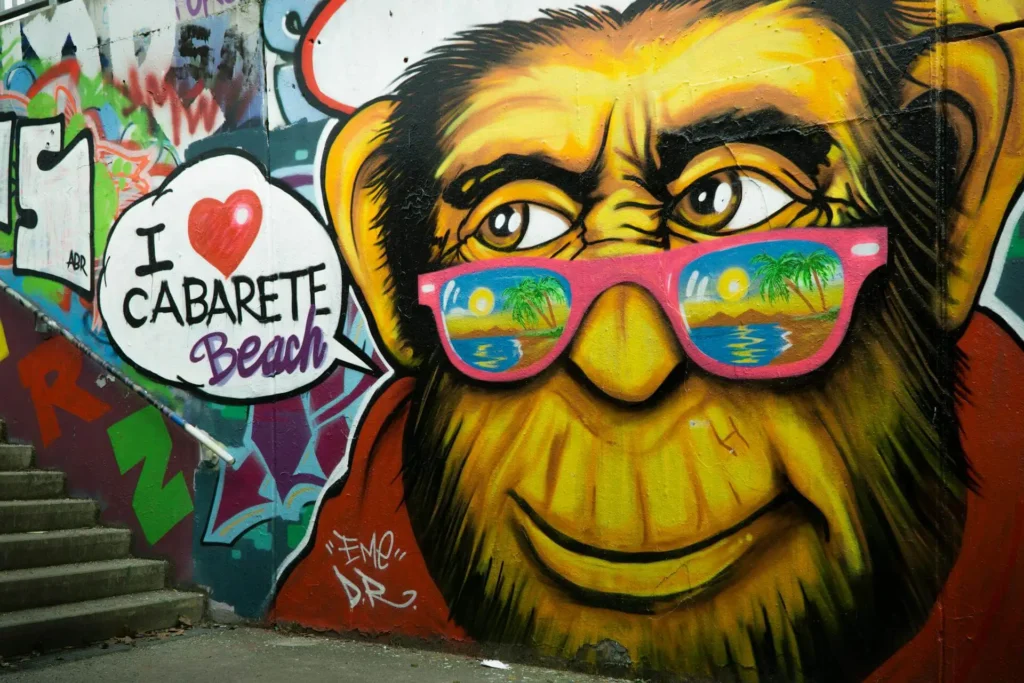
How to Create Your Own Graffiti Characters
Creating graffiti characters involves a blend of imagination, sketching skills, and practice. Here’s how you can get started:
1. Conceptualize Your Character
Begin by thinking about the message or emotion you want to express. Is your character meant to be playful, angry, or mysterious? Developing a backstory for your character can also help guide its design.
2. Start with Simple Shapes
Use basic geometric shapes to sketch out your character. Circles, ovals, and rectangles form the foundation for heads, bodies, and limbs. Simplifying the body structure will help you focus on the overall form before diving into the details.

3. Add Personality
Characters become memorable when they have distinctive traits. Consider features like oversized eyes, exaggerated expressions, or unique clothing to give your character its own identity.

4. Practice Shading Techniques
As you move from sketching to painting, understanding shading is key. There are two main ways to shade graffiti characters:
- Hard lines: For a cartoon-like or graphic style, use bold, defined shadows and highlights to give the character depth without complex blending.
- Smooth fades: For a more realistic approach, blend your colors from light to dark to create softer transitions and realistic shading.
5. Experiment with Colors
The use of color is vital when it comes to graffiti. Choose colors that match the tone of your character. For example, warm colors like reds and yellows can make your character appear energetic, while cooler tones like blues and greens create a more relaxed or mysterious vibe.

Mistakes to Avoid When Drawing Graffiti Characters
- Overcomplicating the design: Beginners often try to add too many details. Start simple and gradually add complexity as you gain confidence.
- Not practicing shading: Shading adds depth and makes your character look three-dimensional, so don’t neglect it!
- Skipping the planning phase: Always sketch out your design first. This will save you from making errors once you start painting.
The Use of Color in Graffiti Characters
Color can dramatically change the perception of a graffiti character. The color wheel helps artists choose the right combinations for impactful designs. Warm and cold color schemes can be mixed to create depth and interest in the design. Contrasting colors can be used side-by-side to make characters pop off the wall.
Color Tips:
- Warm vs. Cold: Use warm colors for focal points (like a character’s face) and cooler tones for background elements.
- Contrasts: Bright colors, when contrasted against darker backgrounds, can make your character stand out more.
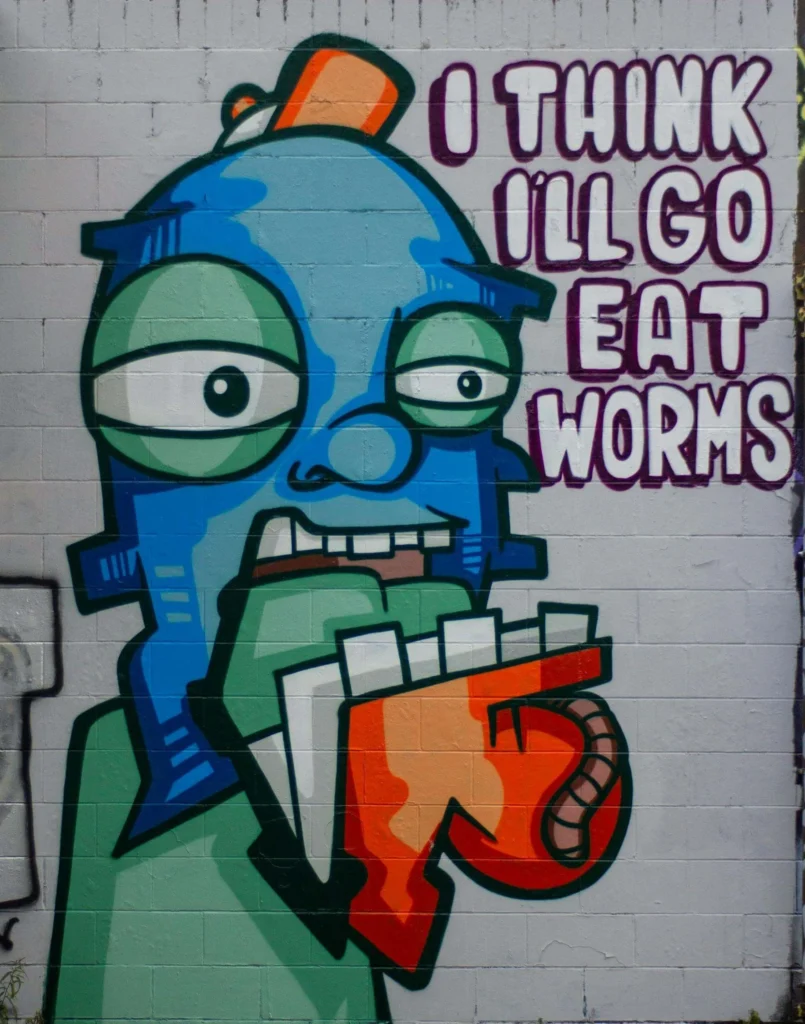
Conclusion
Graffiti characters are more than just decorative elements—they’re expressions of the artist’s inner world. Whether you’re creating a simple B-boy character or an elaborate monster, graffiti characters are your chance to inject personality into your art. By following the techniques in this guide and practicing regularly, you’ll be able to develop your own unique characters that will leave a lasting impression on anyone who sees them.
Looking to learn more about graffiti techniques? Explore our in-depth guides and tutorials on Graffiti Canvas.
